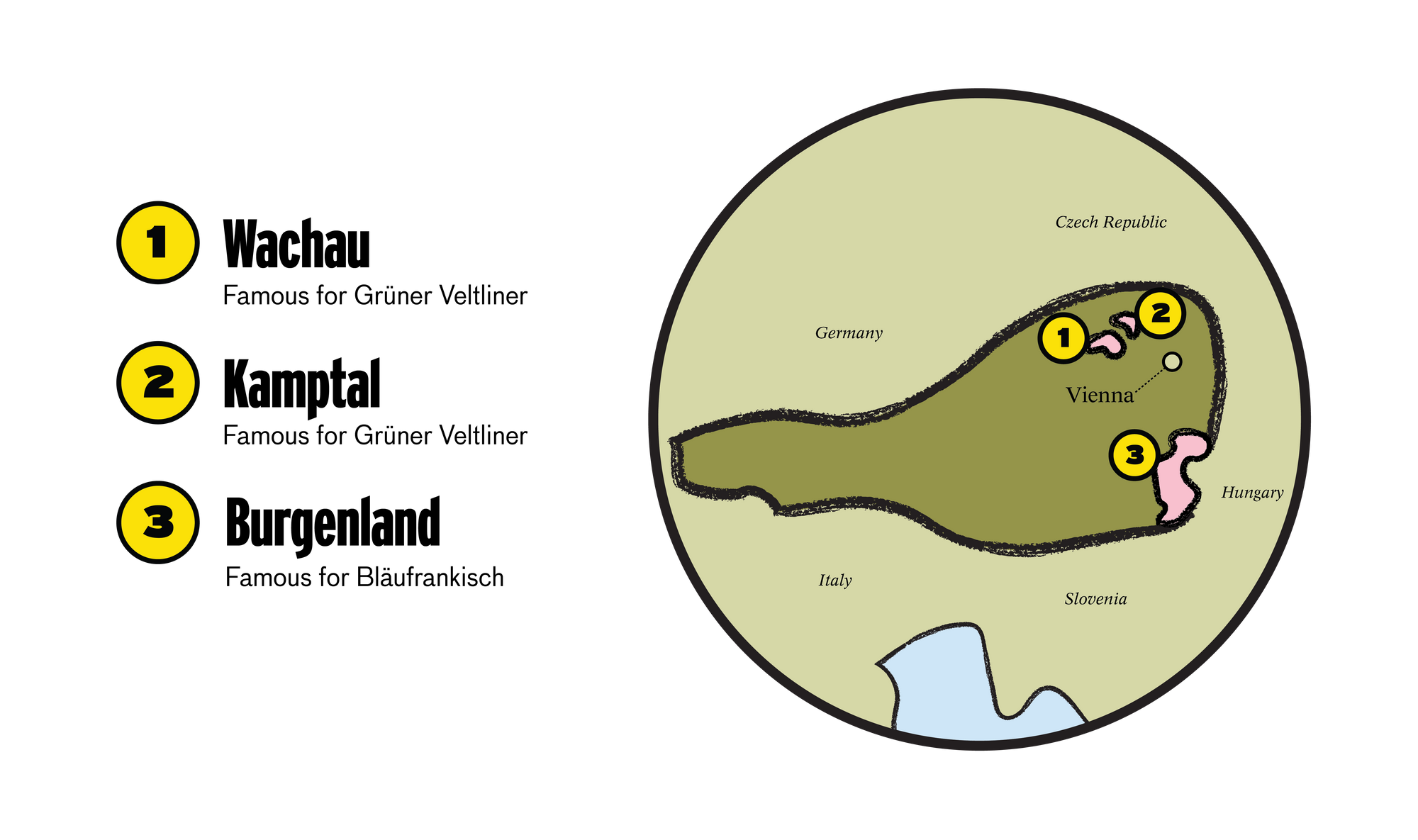

Home to superbly high quality wines made in small quantities.
History--red
As with many central and western European wine countries, there is vinous history here going back 4000 years. The modern industry however only really took off after the destruction and subsequent replanting of vineyards thanks to the phylloxera louse in the 1860s and 1870s.

Although it took several decades for the industry to recover, it allowed lower quality grapes to be replaced with better varieties, particularly the now famous Gruner Veltliner. In fact at one stage, Austria was one of the top 5 wine producing countries in the world!
However, things would turn bad before they got better. The intense planting cycle and demand for Austrian wine ramped up production so much that Austrian wine became a high-volume, industrialised business, with much of it being sold in bulk to Germany. With demand through the roof, growers were focussing on yield rather than quality, and finding inventive ways to flesh the wines out - winemakers discovered that wines could be 'improved' by the addition of a little diethylene glycol, a chemical more commonly found in antifreeze! This made the wines richer and sweeter.
No-one was hurt, but word got out and the export market for Austrian wines disappeared overnight, with some countries banned Austrian wine altogether. It led to a massive change in the culture of wine production in Austria, and a definite shift towards towards quality, which persists to this day.
Main regions--aromatic
Kamptal - in the north of Austria, this is one of the main areas for Gruner Veltliner. Cold and with varied soils across undulating vineyards, it is ground zero for fragrant, spicy whites.
Wachau - better known for Riesling (of which Austria has plenty), there is also brilliant Gruner Veltliner grown here. Probably the best known of Austria's wine regions, the Wachau (as with Kamptal) follows the massive Danube river, with vineyards planted on its banks.
Burgenland - found in central eastern Austria, the Burgenland region borders Hungary and is home to amazing red wines made from Blaufrankisch, as well as some rare but incredible sweet wines.

Main grapes--racy
Gruner Veltliner - an indigenous white variety that can be compared to Riesling in its youth and a lighter Chardonnay as it ages. Plenty of acidity, flavours of grapefruit and white pepper and a tangy radish or perhaps celery note. Intriguing and delicious.
Zweigelt - one of two major red native grape varieties, Zweigelt is the richer of the pair, with black and fruit flavours and moderate acidity. It is actually a blend or crossing of two other red varieties, St Laurent & Blaufrankisch, and shows the pepperiness of the former.
Blaufrankisch - the most highly regarded red variety in Austria, Blaufrankisch can most easily be compared to a slightly richer Pinot Noir. With supple tannins and fresh acidity, it is a wonderful alternative to Pinot.
Specific wine styles--aromatic
Known for high quality - a disaster in 1985 involving winemakers adding chemical diethylene glycol to wines, to make them richer, resulted in international scandal for the entire country. Following this decisions were made at a national level to focus the country's production on high quality wine, with an emphasis on sustainability and ecologically sound practices. This continues to this day, and Austria has a stellar reputation because of it.
Do you know your wine personality? If your answer is no, take our quiz to find out which wines to pick up next and build your box!
Build my box





